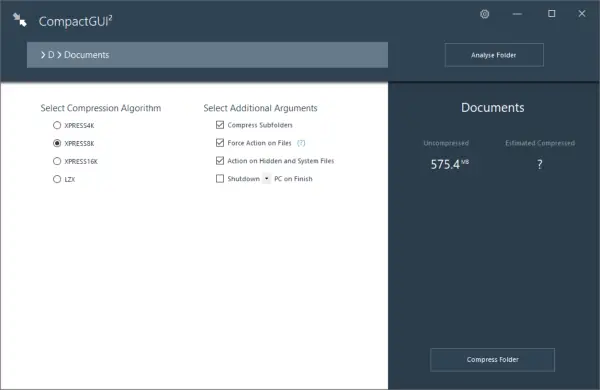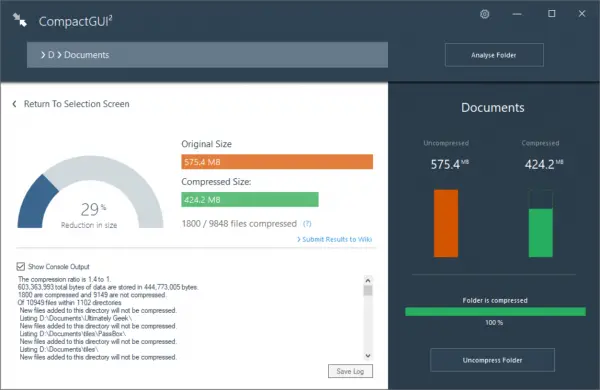Are you always running out of space on your hard drive? The average number of programs installed on a computer that is used daily has increased over the years. This creates a need for more space and leaves behind less space for your other files. Compression is one thing that can help you put a few more files on the same disk. The compression we are talking about is not the regular compression which involves compressing files to a ZIP or RAR file. Rather, we are talking about compression at the file system level.
Windows 11/10 comes with an inbuilt tool called compact.exe. The main task of this tool is to compress files and folders using NTFS compression. As mentioned, it will not generate a separate ZIP or RAR file; instead, compression algorithms will be used at the file system level. This will result in more free space, and your programs and applications will still be usable. Compact can be accessed from the command line or from the properties of a folder. Most users cannot take advantage of this feature just because it is hard to reach. In the post, we’ll talk about a free tool called CompactGUI which makes it a lot easier to use compact.exe.
Compress installed Programs with CompactGUI

You can consider CompactGUI as an intermediate between you and Windows’s compact.exe. The GUI makes it very simple to compress your files. The tool displays all the stats and also lets you choose the compression algorithm. We have discussed a few more arguments in this post.
To get started, choose a folder that you want to compress. It can be anything, a game or an installed application or any other folder. Once you’ve selected a folder, you can view the stats in the left panel. Or you can hit the ‘Analyse Folder button to view the current compression status. The program will display the current size and the estimated compressed size. You can get a fair idea of how much space you are going to save.
Now it is time to choose a compression algorithm. Basically, there are four compression algorithms available and they are:
- XPRESS4K: This one is the fastest, but the compression is weakest.
- XPRESS8K: An intermediate combination of speed and strength.
- XPRESS16K: Stronger but slower.
- LZX: Strongest and slowest, should be used only on machines with good processing power.
By default, compact.exe runs the XPRESS8K algorithm and it is the most recommended one as well.
CompactGUI supports a few additional arguments. You can enable/disable compression for subfolders or force action on files. Moreover, you can also include hidden and system files in the compression. This last option allows you to shutdown/restart/sleep your computer after the compression has finished. Now, you are all ready to start the compression process.
The tool has capabilities to run in the background and you can even minimize it to system tray. It will automatically notify you when the compression is complete. Moreover, you can add a shortcut to CompactGUI in the right-click menu of a folder.

Once the compression is complete, you can view all the stats and details about the compressed folder. You can compare the sizes before and after the compression and see the percentage reduction in size. The tool’s decompression option allows you to easily decompress the folders back to their original state.
CompactGUI is a great GUI for the inbuilt compact.exe. Now you can easily compress folders and save some disk space. And the best part is the files and subfolders will still be accessible even after compression. The tool is a time saver and a space saver as well. Visit github.com to download CompactGUI.